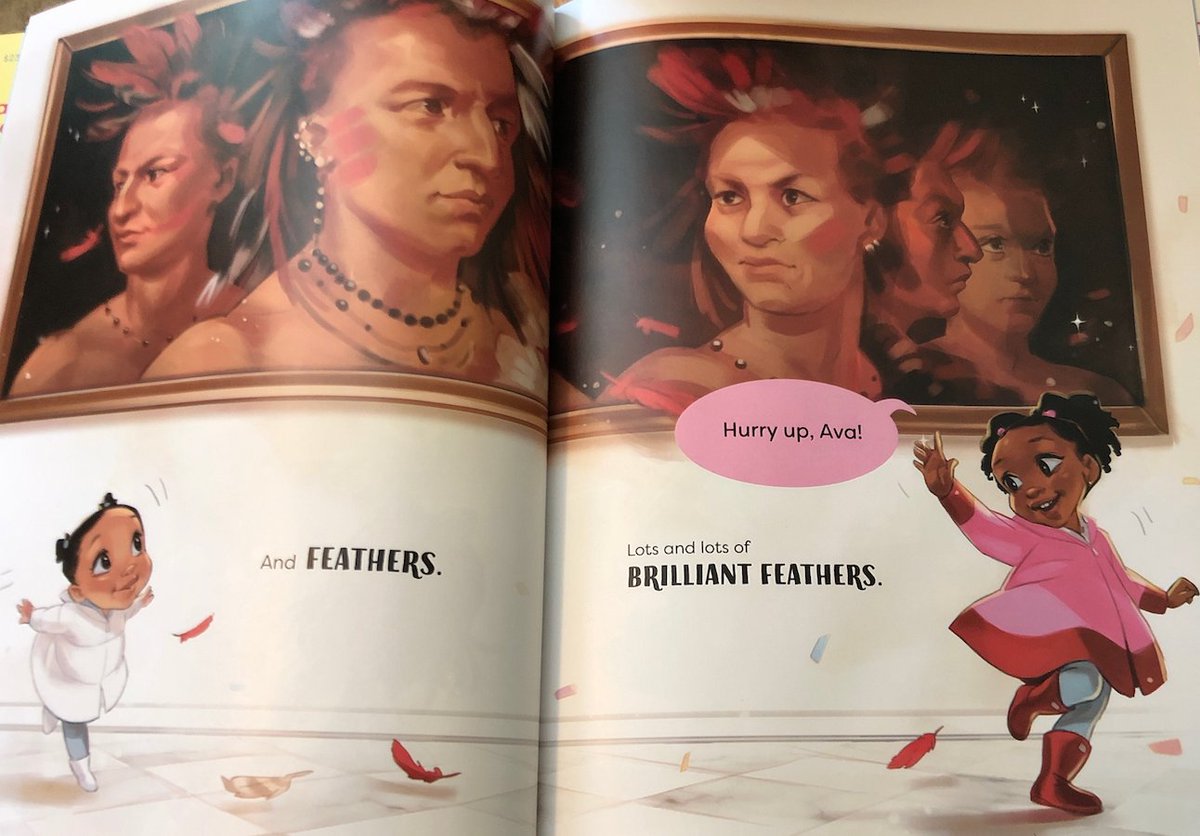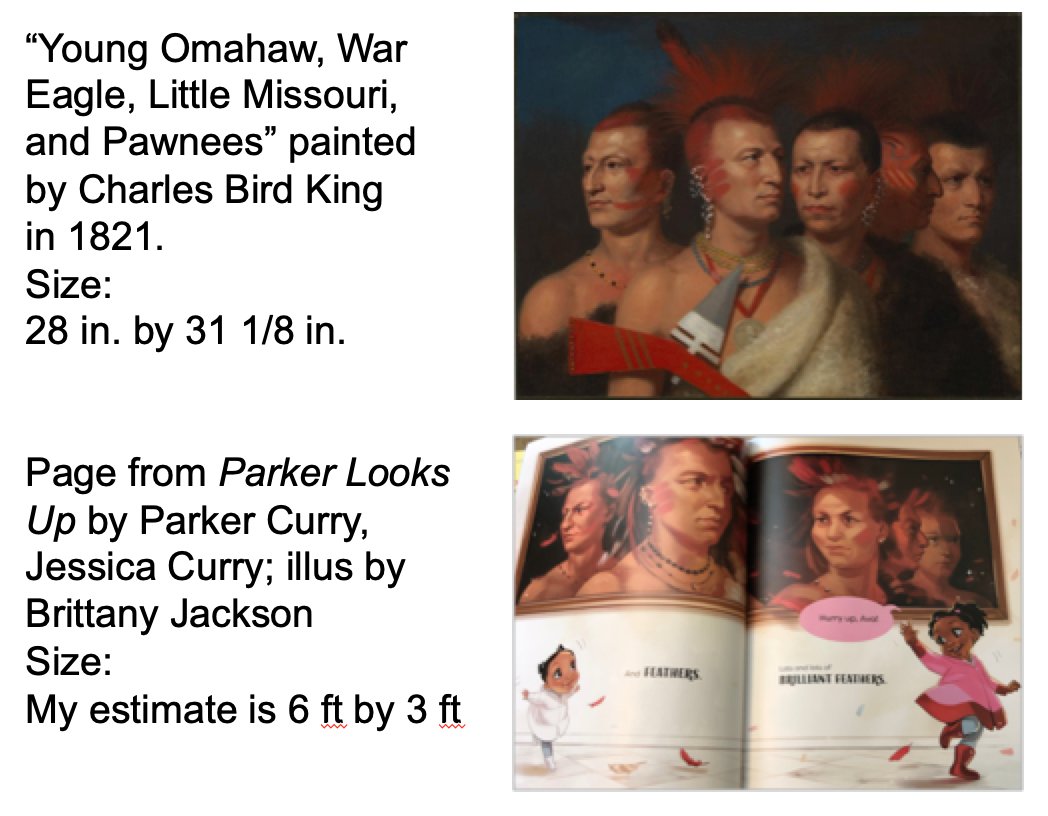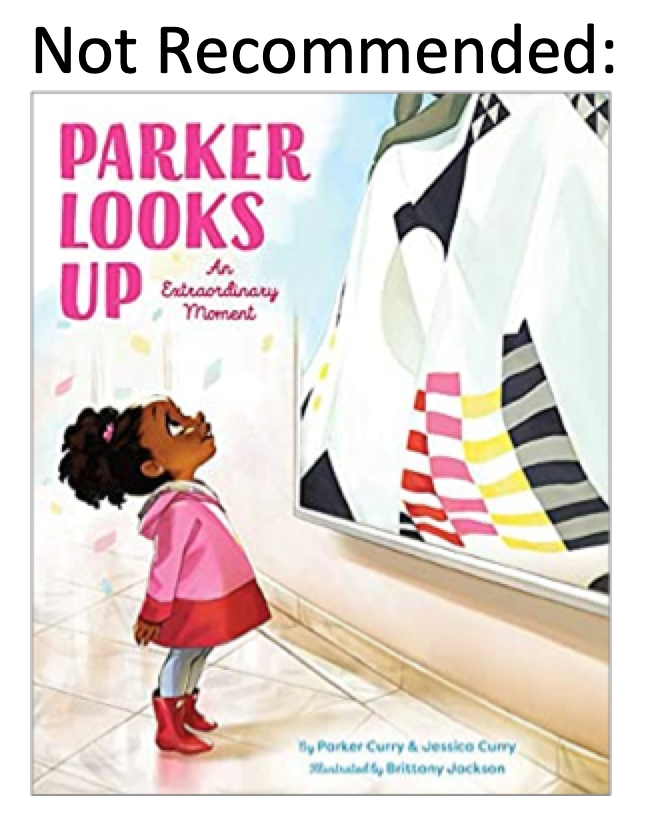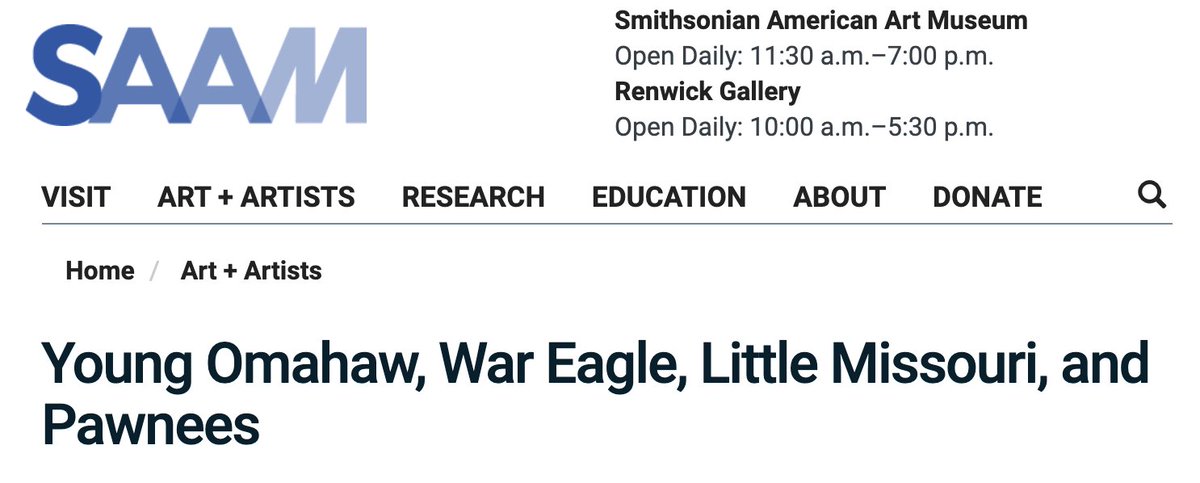Using the Spooler app, I am pasting the thread here.
Parker Looks Up
Published by Aladdin (Simon and Schuster)
Year published: 2019
Reviewed by Debbie Reese
Status: Not recommended
As you read through the series of tweets, you will see I am critical with a specific page. It is not an insignificant error. Parents and children of the tribal nations in the original illustration will notice that the headdresses are incorrectly depicted.
****
Oh no!!!!
You recall the excitement over this photo of a little girl named Parker, gazing up at the painting of Michelle Obama in the National Portrait Gallery?
You recall the excitement over this photo of a little girl named Parker, gazing up at the painting of Michelle Obama in the National Portrait Gallery?

People in children's lit know that it was going to be turned into a picture book. Well, it came out on Oct 15, 2019. Today a friend wrote to me about this image in it... and I was taken aback. There's a lot to say...

The illustrator's rendering of that art was familiar to me. I've been to that gallery but I did not recall a wall-sized piece of art that size.
I did a little bit of research and put together this comparison:

So... the size is way out of whack (I found the dimensions at the National Portrait Gallery's website)...
But so is the rendering!
In the picture book, the emphasis is on feathers.
But so is the rendering!
In the picture book, the emphasis is on feathers.
"Feathers! Lots and lots of brilliant feathers!"
This is utterly disappointing to me.
I have no doubt the authors/illustrator and their editors at Aladdin (Simon and Schuster) wanted to do a good thing and show a range of representation.... but they MIS-represented Native people.
Feathers. Think about that for a minute.
Why did that happen? Why did feathers get added to that page?! If you look at the angles of the faces, the noses, etc., you know that the illustrator worked from an image of the actual painting...
So WHY? WHY WHY WHY?!
So WHY? WHY WHY WHY?!
It was not necessary to do that!
I would have loved to hand this book to young readers, but now?
I would have loved to hand this book to young readers, but now?
Absolutely not.
That page ruins the book--not just for Native kids--but for non-Native kids, too, who will come away from the book with their stereotypical ideas affirmed.
That page ruins the book--not just for Native kids--but for non-Native kids, too, who will come away from the book with their stereotypical ideas affirmed.
The reviews from Kirkus, School Library Journal, and Publisher's Weekly do not note this misrepresentation.
Please don't argue with me that the book lifts African American children.
Please don't argue with me that the book lifts African American children.
There is absolutely no reason to lift one marginalized group and misrepresent another. Parker Looks Up is not recommended because of its stereotypical treatment of Native peoples.

---On Dec 15, I added to the thread I did on the 14th:---
Back this morning with more to say about PARKER LOOKS UP.
"Young Omahaw, War Eagle, Little Missouri, and Pawnees" isn't in the National Portrait Gallery. It is in a different museum (the Smithsonian American Art Museum). Editing this info on Dec 16th: Several people have written to tell me that the Smithsonian American Art Museum and the National Portrait Gallery are in the same building, and therefore, Parker could have seen both, the Young Omahaw painting and the portrait of Michelle Obama during a single visit. I did not know the two museums were in one building and am glad for that information.

In the back matter, we see a note that the paintings in the picture bk are "reimagined as Parker Curry experienced them during her unforgettable and memorable visit to the National Portrait Gallery and Smithsonian Art Museum."

Parker Curry was two years old when she saw the painting on March 1, 2018 (see NPR story In 'Parker Looks Up," A 2-Year-Old Shares A Moment With Michelle Obama).
To be clear: I adore that moment in Parker Curry's life! It tells us so much about why representations matter!
To be clear: I adore that moment in Parker Curry's life! It tells us so much about why representations matter!
What I question is the rest of the book... how the story was created and illustrated--by adults.
Did a two-year old look at the painting of Pawnee men and think "feathers" when there is one feather in the original painting?
If yes, then the adults in her life have a responsibility to help her understand what stereotypes are, and how they shape the ways we view the world.
If two-year-old Parker did not think "feathers" when she saw the original painting, and it is her mother and the illustrator who added that to that page because they wanted to make the book inclusive... then somebody should have helped them understand stereotyping.
That someone could have been their editor at Simon and Schuster.
This year (2019), @simonschuster intervened in what an author/illustrator did with IGLOO FARM. The book was redone, as SNOWY FARM. Their editor asked them to do that (see AICL's blog post, Igloo Farm Becomes Snowy Farm).
I've read several articles this morning about Parker's experience with the Obama portrait. It seems to me that her mother took her to the Portrait Gallery specifically to see it.
But in the picture book, that is not the story we're given.
In the picture book, we're told that the family simply went to the museum, and when it was time to leave, they happened upon the Obama painting and Parker was transfixed.
That invented story takes away from the actual experience, the purpose of that day in their real lives. Who had the idea to make up this story, to get to that moment in Parker's life?
I'll be thinking about that treatment of that day in Parker's life because it matters. It takes away from the political motivation that her mother had, in taking her there in the first place.
That invented story takes away from the actual experience, the purpose of that day in their real lives. Who had the idea to make up this story, to get to that moment in Parker's life?
I'll be thinking about that treatment of that day in Parker's life because it matters. It takes away from the political motivation that her mother had, in taking her there in the first place.
It is parallel to the many mis-representations of Rosa Parks as nothing more than a tired seamstress who made a decision one day (not to give up her seat on the bus) rather than the facts of her life as a political activist.













